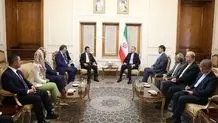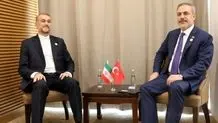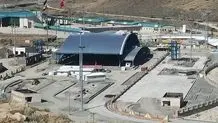Contrasting Visions: Nowruz Policies in Turkey versus Iran's Realm
In the language of Persian, Nowruz'; signifies the 'New Day'; aligning with the dawn of Farvardin, the inaugural month in the ancient tapestry of Iranian timekeeping.
SHARGHONLINE, Salar.H Seyfodini: In the language of Persian, Nowruz'; signifies the 'New Day'; aligning with the dawn of Farvardin, the inaugural month in the ancient tapestry of Iranian timekeeping. Across epochs, this momentous occasion has woven itself into the fabric of tradition, resonating deeply within the hearts of Iranians and echoing amongst scattered Persian voices worldwide. However, in the recent annals of history, a new narrative unfolds, spearheaded by Turkey, as it steps into the limelight of regional collaboration surrounding Iran.
Offering a fresh perspective on Nowruz, this endeavor seeks to breathe new life into age-old customs. Fahrettin Altun 2 , spokesperson for the Presidency and deputy orchestrator of media affairs, eloquently painted this vision in recent dialogues published in the esteemed Kazakh newspaper 'Egemen' Here, Nowruz is hailed as a 'symbol of the Turkic world', an emblem, perhaps, of their collective spirit. This proclamation resonates with the flurry of activity within the Turkic Council, purportedly guided by Turkey's hand. Yet, amidst this geopolitical tapestry, Turkey's quest for dominance extends beyond mere organizational structures. It delves deeper, craving a cultural ethos to infuse their concept of the 'Turkic world' with philosophical depth. However, beneath the veneer of grand aspirations lies a sobering reality – these structures may serve more as political chess pieces than genuine cultural catalysts.
In recent years, the European Union has inspired many regional powers beyond Europe's borders to forge similar alliances. This notion, seemingly radical, envisages a potent union built upon shared cultural and civilizational threads, weaving together disparate nations and cultures. Yet, beneath this grand ambition lies a flawed understanding of the European Union's ethos. United Europe emerged from political accords, championing ideals such as free markets, liberal democracy, and international cooperation, rather than seeking cultural uniformity or engaging in trivial rivalry with other cultural realms. While its founding members boasted illustrious civilizations and occasionally shared historical ties, they also bore significant differences. Nonetheless, European governments, transcending past animosities within the confines of the world's smallest continent, boldly embarked on this venture, seeking unity amidst diversity.
The current leaders in Turkey are on a quest to construct an & "imagined communication", a concept that exists solely on paper. The notion of the Turkic world, while touted fervently, remains largely uncharted territory in historical reality. Turkey's estrangement from the European Union has paved the way for an alternative narrative, one that beckons towards the East. This "Eastern"; realm encompasses Hanafi and Shafi'i Muslims, drawn to the allure of the caliphate, alongside regions governed by authoritarian regimes in the Middle East and South Caucasus. Turkey's overture towards Middle Eastern peoples, wary of fundamentalism, underscores the emphasis on national identity, weaving together a tapestry of imaginary realms. Yet, it appears Turkey has veered off course in this pursuit. The crux of the matter lies in Turkey's failure to acknowledge Nowruz within its own borders, despite aspiring to be the epicenter of the imaginary Turkic world. Moreover, Turkic citizens remain oblivious to Nowruz's significance as a gravitational center of civilization.
However, the timing of Nowruz, celebrated as the spring equinox, finds its rhythm on the high plateau of central Iran, rather than in locales like Kazakhstan and Turkey, where spring unfurls its petals nearly a month later. The true span between societies, stretching from the cobblestone alleys of Istanbul to the boundless steppe of Kazakhstan, can only be sketched in the realm of dreams, eluding the confines of cartography. For the social tapestry of a Kazakh dweller weaves hues starkly different from those adorning the everyday life of an Istanbulite, rendering any comparison as mere wisps of smoke in the wind. The crux of the matter lies in the reluctance of today's Turkish policymakers to acknowledge that borders, as geographical phenomena, etch deeper into the tapestry of reality than the transient strokes of political intrigue or cinematic artistry.
When Fahrettin Altun spoke of Nowruz as a "symbol of Turkic unity"; he forgot that this allegedly symbolic event is not recognized within Turkey itself. There is no social tradition that indicates Turkish society has had any interest in the Nowruz celebration or its philosophy throughout history. Even today, Nowruz holds no place in the Turkish calendar. Unlike Iran, which experiences a two-week holiday season during this period, life in Turkey continues as usual. Essentially, Nowruz is based on the Iranian calendar, rooted in the Achaemenid period and influenced by the Persian calendar. Fundamentally, Nowruz is the first day of the month of Farvardin (the name of one of the archangels in Zoroastrianism), which begins at the end of Esfand. The new Zoroastrian calendar, dating back to Artaxerxes I (the fifth King of Kings of the Achaemenid Empire, 441 B.C.), was updated by Omar Khayyam (1131 AD) during the Islamic era and continues to be used today. Therefore, Nowruz is not just a word that can be appropriated through repetition and speeches but a collection of ancient traditions with a specific chronology, calendar, and culture. As a result, it is impossible to confiscate Nowruz by using the Gregorian calendar months (associated with Roman civilization) used globally, even referred to as "Turk"; as Nowruz falls on the first day of Farvardin, not on March 20th.
Two journalists close to Erdogan and Ilham Aliyev published short notes in response to the congratulatory message from the US Vice President's Office on Network X during the past Nowruz.
Brenda Shaffer and Michael Scott Doran, known supporters of Turkey's regional policies, objected to Kamala Harris for not only congratulating Nowruz in Persian but also mentioning the Shahnameh book (Iran's national epic written in 1010 AD)! Ferdowsi in the Shahnameh provides the most accurate account of the ancient tradition of Nowruz, which dates back to the era of Jamshid Kiani (the mythical king of Iran prehistory). However, the sensitivity of Shaffer and Doran (likely fueled by an institution under Fahrettin Altun's command) to Turkey's policies sparked a debate between them and European historians who were astonished by these statements.
In addition, members of alleged Turkic countries, including the Republic of Azerbaijan, have appropriated some other Iranian cultural symbols such as Nizami Ganjavi (a poet who wrote national narratives of ancient Iran in the form of poetry in five books) and the game of Chogan, and have attempted to portray them as part of the cultural heritage of Turkic-language states. The file on this matter has been evaluated by Iranologists solely as a political effort. While none of the members of Aliyev's cabinet or the leaders of the member states of the Organization of Turkic States are able to read Nizami Ganjavi's books, in Iran, every student knows at least one poem by Nizami by heart.
The reason why The Organization of Turkic States can hardly present any independent historical heritage that is not part of a civilization is that this organization does not take cultural steps within the realm of "reality"; One of Turkey's challenges is that it banned the celebration of "Nowruz" in the east of the country for several decades, and in the 1980s, when it couldn't oppose it entirely. A writer close to the military propaganda office claimed in a hypothesis that Turks in Central Asia had another tradition called "Ergenekon", which was almost similar to Nowruz! The fact that Fahrettin Altun does not mention Ergenekon today as a public celebration belonging to the Turkic world signifies the failure of that hypothesis.
Turkey's aspirations to mirror the European Union are destined to falter. The essence of the European Union lies in democratic principles and a flourishing free-market economy, not in the narrow confines of nationalist fervor embodied by Pan-Turkism. A perplexing paradox emerges wherein Turkey, positioned as the nucleus of the Turkic realm, fails to formally embrace Nowruz within its own borders, leaving its populace in the dark. Meanwhile, the extent of Nowruz's influence among the common folk in lands such as Kazakhstan, Uzbekistan, and Turkmenistan remains shrouded in uncertainty. Yet, it appears that authoritarian leaders, embarking on the journey of nation-building post the Soviet Union's demise, may find solace in the embrace of Nowruz.
1 Ph.D. in Political Geography at Tarbiat Modares University, Tehran. Researcher In Geopolitics.
2 https://www.aa.com.tr/en/turkiye/strong-turkic-unity-will-contribute-to-peace-worldwide-turkiye/3172272




